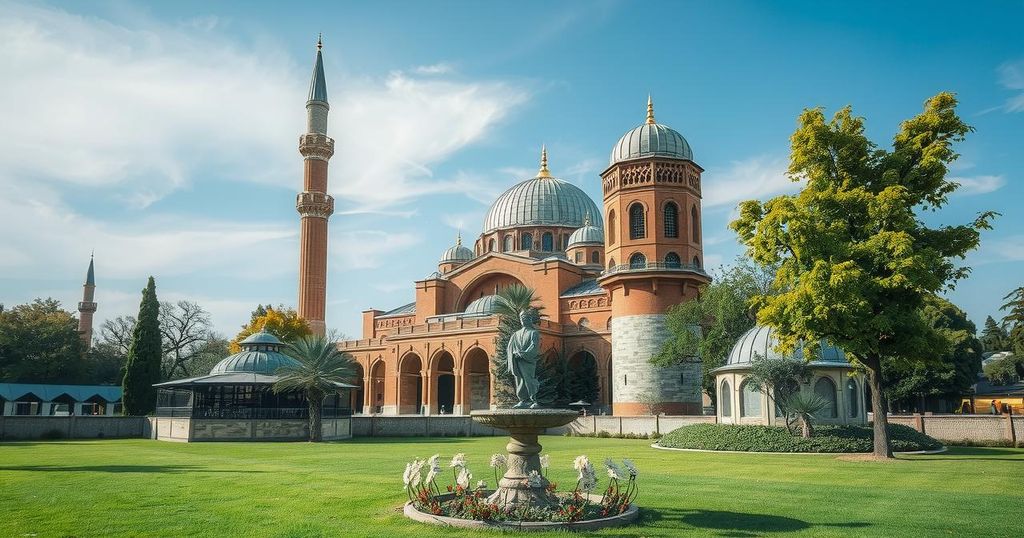The Resilience of the Jewish Community in Iran Amid Challenges
Iran’s Jewish community, though facing rising antisemitism, continues to thrive, maintaining a strong cultural identity. Despite significant emigration since the 1979 Revolution, a community of approximately 9,000 now resides primarily in major cities, enjoying legal protections yet confronting unique challenges tied to their national and religious identities. Discussions at the ANU Museum aim to shed more light on their historical significance and current dilemmas.
Despite increasing antisemitism and a decreasing tolerance, the Jewish community in Iran preserves a strong cultural identity and sense of pride, according to David Nissan, an expert on Iranian affairs and former Israeli intelligence officer who was born in Tehran. He emphasizes that Iranian Jews’ national identity is intrinsically linked to Iran rather than Israel, observing the nuances within their community over the last 16 months.
Though many Jews have emigrated since the 1979 Islamic Revolution, the Iranian Jewish community maintains its traditional lifestyle, showcasing around 30 active synagogues, Jewish educational institutions, kosher food establishments, and a matzah factory. Nissan asserts that Jews in Iran do not face persecution and the Iranian constitution protects their rights as an official religious minority, allowing them religious freedom.
One key issue for Iranian Jews today is disentangling Judaism from Zionism, which Iran criminalizes. Nissan explains that the community must demonstrate loyalty to Iran by distancing itself from Zionism while grappling with a struggling economy. Most Iranian Jews belong to lower socioeconomic classes, compounding their challenges within society.
Historically, Iranian Jews have endured hardships, particularly after the Muslim conquest in the 7th century and during the rise of Shi’ite dominance in the 16th century. Yet, during the reign of Mohammad Reza Pahlavi, they enjoyed a period of prosperity and integration into influential societal positions.
Following the revolution, the community, which once numbered nearly 100,000, now comprises about 9,000 individuals residing primarily in Tehran, Shiraz, and Isfahan. Nissan asserts that those who wish to leave can do so, but many do not find the prospect of moving to Israel enticing enough, considering cultural, economic, and security factors.
At ANU – Museum of the Jewish People in Tel Aviv, a series of meetings titled “Perspectives on Iranian Jews” commenced, aiming to explore this unique community. Rivka Aderet, head of content at ANU, highlights the significance of studying this resilient community against the backdrop of Iran’s complex socio-political landscape.
Iran’s Jewish community is one of the oldest globally, with historical examples such as the Book of Esther demonstrating its longstanding influence. Aderet articulates the intrigue surrounding Iranian Jewry’s resilience and the prevailing question of why they remain there despite the numerous challenges they face.
Oded Ravivi, CEO of ANU, asserts that understanding the narrative of Iran’s Jewish community is pivotal for grasping broader themes regarding Jewish identity and connection to cultural roots. He emphasizes the urgency of reinforcing belonging among diaspora Jews and ensuring that Israel remains a secure haven for those wishing to immigrate.
The Jewish community in Iran, although facing various challenges, remains resilient and committed to its heritage. They enjoy certain protections and maintain a distinctive identity tied to their history. Despite the temptation of leaving, many Iranian Jews opt to remain due to deep cultural ties and concerns over their future in potential new homes. The ongoing discussions surrounding this community encapsulate broader themes of identity and belonging within the Jewish diaspora.
Original Source: www.heritagefl.com




Post Comment